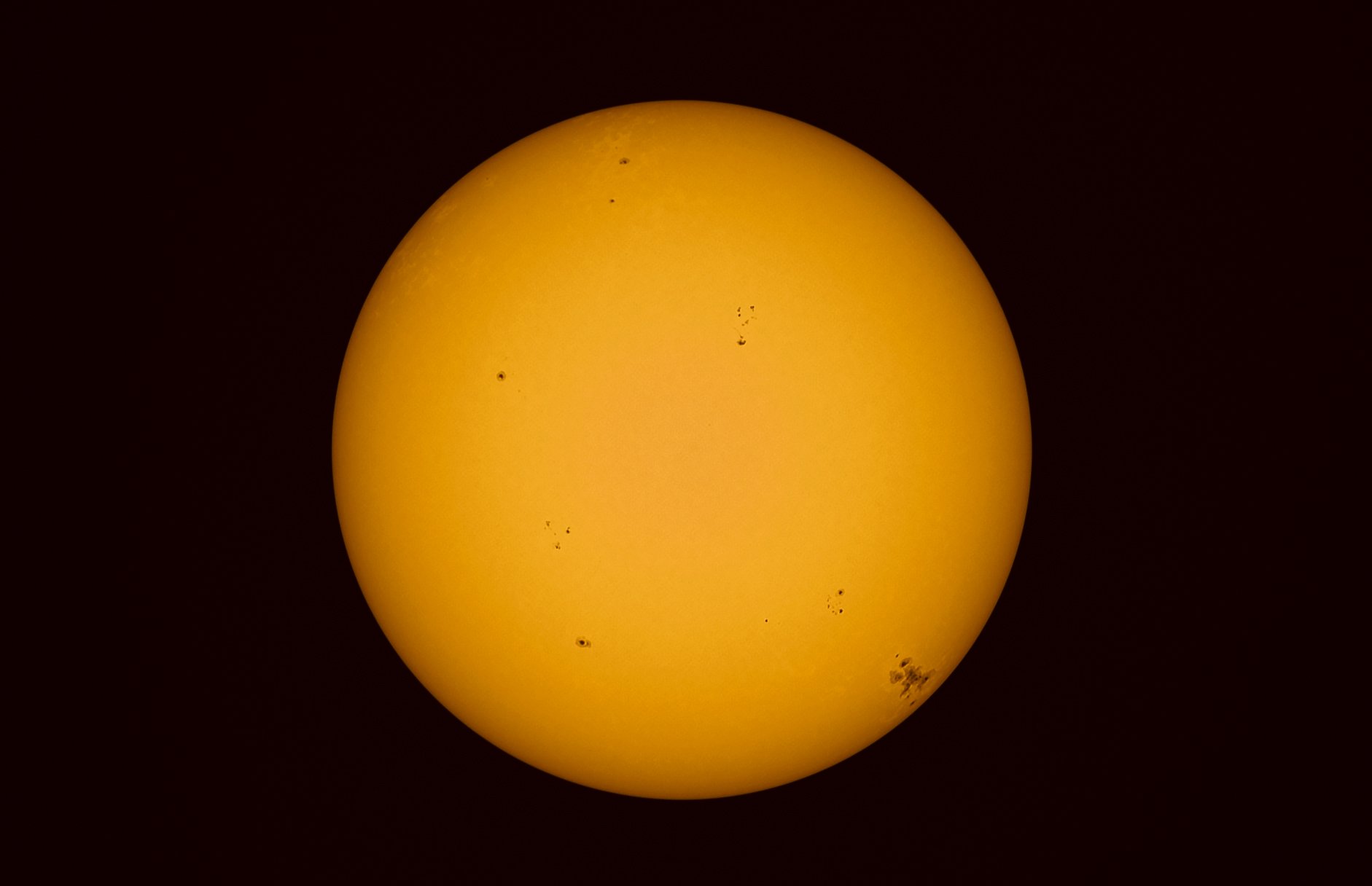The Granddaddy of Them All
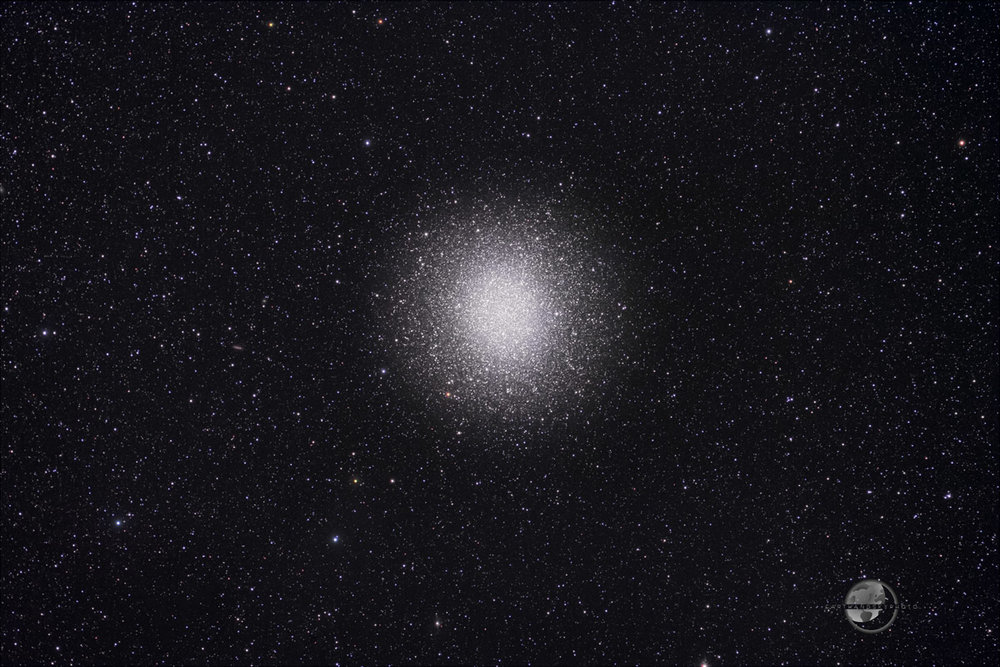 Omega CentauriThe grand-daddy of them all. The globular cluster in Centaurus is the biggest and brightest in the Milky Way Galaxy. It is estimated that over 10 million stars are rotating around the cluster's core. The cluster is designated as NGC 5139 on star charts and lies over 18 thousand light years away. The cluster is 150 light years across and is estimated to be over 12 billion years old! It is a glorious sight in a telescope and is best viewed from southern latitudes. This image was taken during the 2010 Winter Star Party in the Florida Keys.
Omega CentauriThe grand-daddy of them all. The globular cluster in Centaurus is the biggest and brightest in the Milky Way Galaxy. It is estimated that over 10 million stars are rotating around the cluster's core. The cluster is designated as NGC 5139 on star charts and lies over 18 thousand light years away. The cluster is 150 light years across and is estimated to be over 12 billion years old! It is a glorious sight in a telescope and is best viewed from southern latitudes. This image was taken during the 2010 Winter Star Party in the Florida Keys.
Technical details: Images were acquired with a modified Canon T1i on a Takahashi 85 FSQ with focal reducer. The tracking mount used was an Astro-Physics Mach1 GTO. Images were converted in Adobe Light Room 3.0, combined with DeepSky Stacker, and enhanced in Adobe Photoshop CS5. There are approximately 60 images combined with varying ISOs to obtain the final image.
The image may be seen in larger portfolio presentation in the Color Astrophotography Gallery.
Milky Way Over Balanced Rock
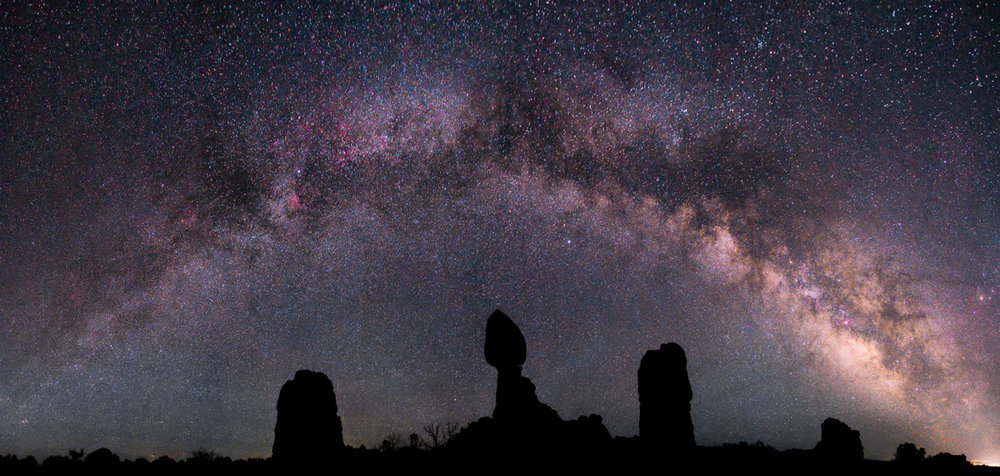 Milky Way Over Balanced RockLight from the center of the Milky Way Galaxy is roughly 20,000 light years away. There is no better place to take in that ancient light than from the American Southwest where Earth's ancient rocks create wonderful foregrounds in which to view the Milky Way. This image is a 7 frame stitch from Arches National Park in June 2010. The image is located in the Color Astronomical Gallery at the bottom of the page.
Milky Way Over Balanced RockLight from the center of the Milky Way Galaxy is roughly 20,000 light years away. There is no better place to take in that ancient light than from the American Southwest where Earth's ancient rocks create wonderful foregrounds in which to view the Milky Way. This image is a 7 frame stitch from Arches National Park in June 2010. The image is located in the Color Astronomical Gallery at the bottom of the page.
I am not sure what the radiating rays of light may be. They seem to be originating from Balanced Rock. Perhaps a very dim source of light or some atmospheric phenomena.
This image is not available as a fine art print.
Horsehead Nebula from Winter Star Party 2010
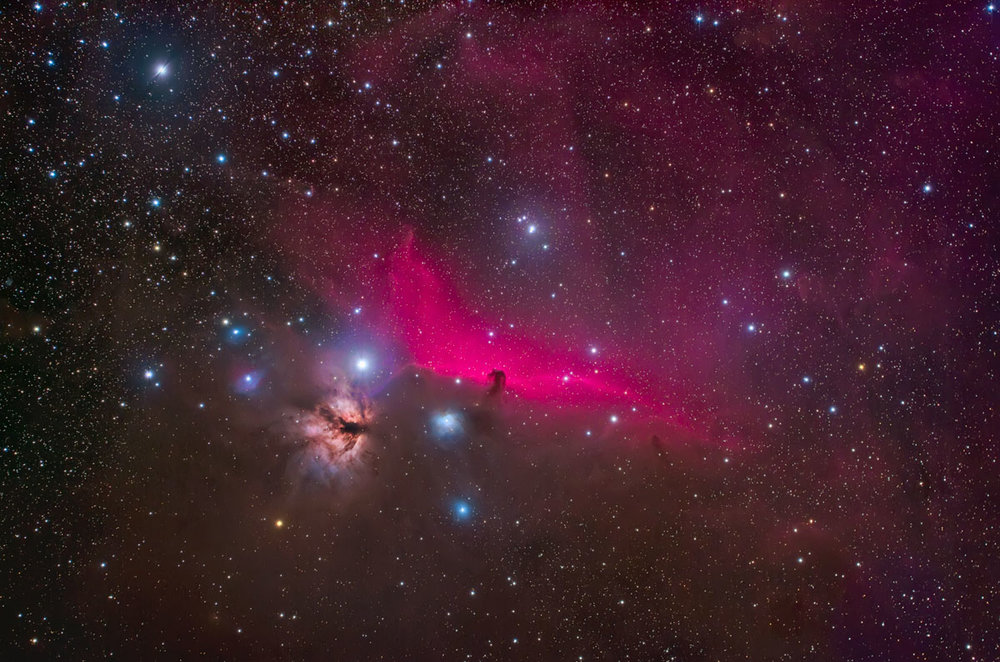 Horsehead Nebula, copyright 2010 Jeff BallI love revisiting old friends with new gear and that is exactly what this image represents. The new gear was the Takahashi FSQ 85 and the Canon T1i camera modified by Brent Maynard. It also represents many new enhancement techniques that I have learned over the past few months. That is why we often revisit familiar friends, to bring new interpretation to the image through either refined artistic vision, new gear, new techniques, or all of the above.
Horsehead Nebula, copyright 2010 Jeff BallI love revisiting old friends with new gear and that is exactly what this image represents. The new gear was the Takahashi FSQ 85 and the Canon T1i camera modified by Brent Maynard. It also represents many new enhancement techniques that I have learned over the past few months. That is why we often revisit familiar friends, to bring new interpretation to the image through either refined artistic vision, new gear, new techniques, or all of the above.
Unfortunately, all of the new techniques require a great deal of time and result in a rather lengthy image optimization process. I hope to be more efficient with time, but I do like to let the image "stew" for a while before it is "served."
The image may be seen at this link "Horsehead Nebula." Please don't forget to click on the image for optimum presentation in a portfolio window.
I hope you enjoy the image of one of the great areas of our Milky Way galaxy. The area is around the star Alnitak in the constellation Orion and is approximately 1600 light years away. For scientific information on the area please see this link.
NEAF 2010
An overview of the world's largest astronomical trade show. The North East Astronomy Forum was held April 17-18, 2010 in Suffern, NY. Jeff highlights the gear that caught his eye during the exhibit. You can view a larger presentation of the video at YouTube.
Trouble with YouTube, try the Vimeo file.
NEAF 2010 by Jeff Ball from Jeff Ball on Vimeo.
A New Tool: Astro-Physics Refractor!
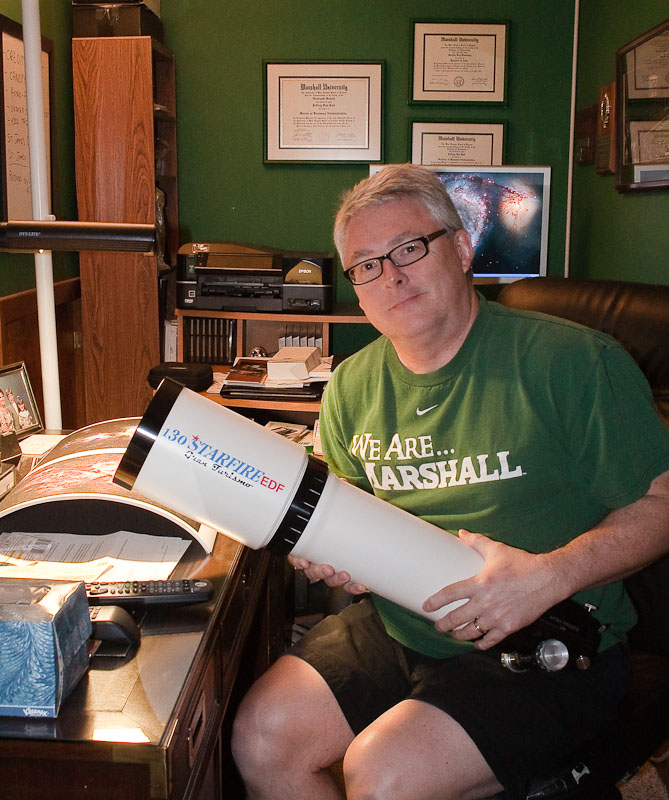 The Astro-Physics 130EDF refractorToday I received an Astro-Physics 130EDF refractor. Astro-Physics is a premier telescope manufacturer and IMHO manufacture the best photographic instruments available today. The refractor is an f6 focal ratio and a focal length of over 800mm. The telescope can be stopped down to f4 and about 600mm focal length. This telescope has a field of view at 600mm of 2x3 degrees. It will be terrific for moderate field objects like the Andromeda Galaxy, Pleiades, Triangulum Galaxy, and the Rosette. Can't wait to put the instrument to work.
The Astro-Physics 130EDF refractorToday I received an Astro-Physics 130EDF refractor. Astro-Physics is a premier telescope manufacturer and IMHO manufacture the best photographic instruments available today. The refractor is an f6 focal ratio and a focal length of over 800mm. The telescope can be stopped down to f4 and about 600mm focal length. This telescope has a field of view at 600mm of 2x3 degrees. It will be terrific for moderate field objects like the Andromeda Galaxy, Pleiades, Triangulum Galaxy, and the Rosette. Can't wait to put the instrument to work.
Jeff's Blog
Join me on photography journeys from desert landscapes to deep sky wonders.




